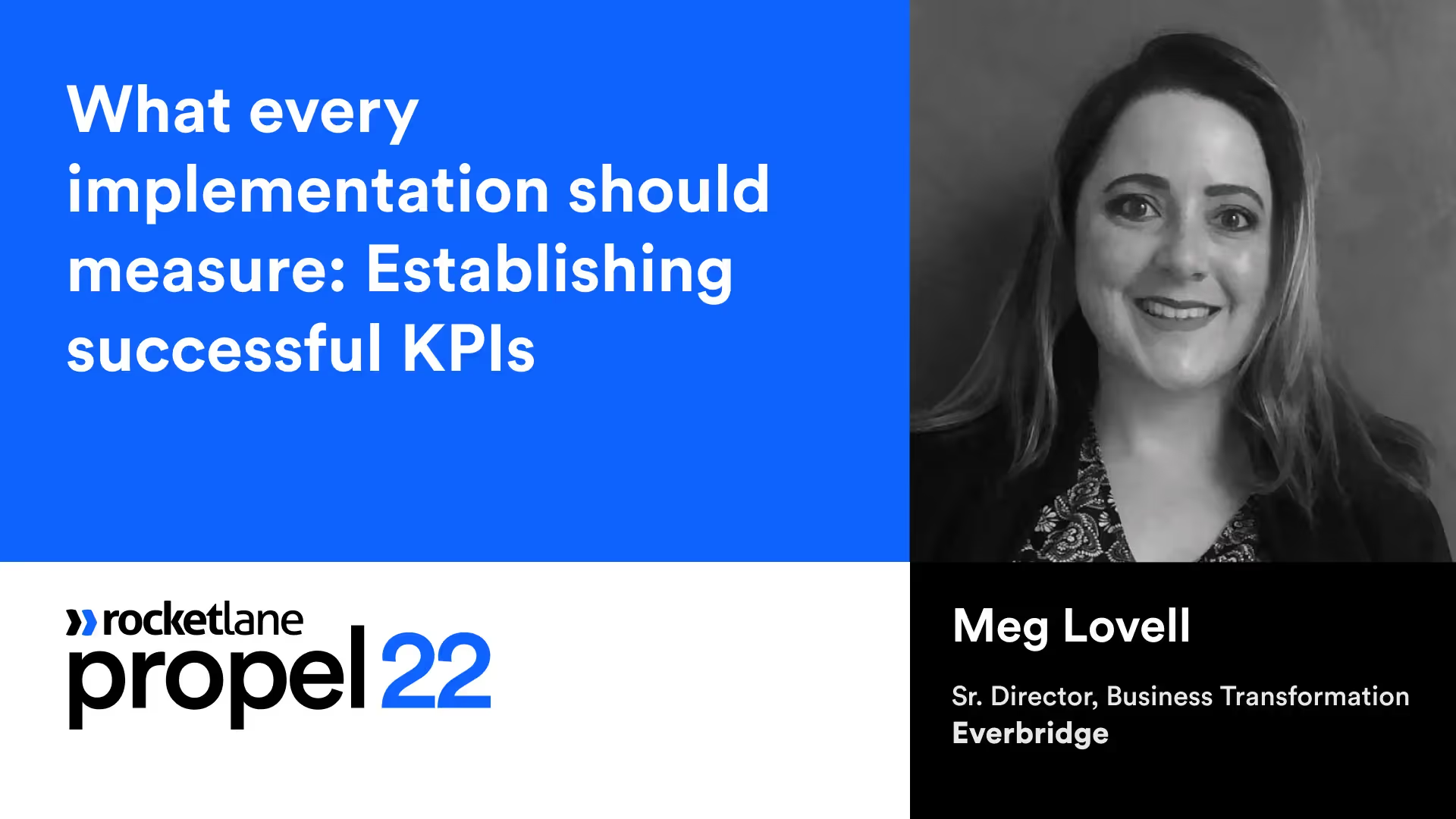Meg Lovell, Senior Director of Business Transformation at Everbridge, spoke at Propel22 about why every implementation measures KPIs and how you can establish successful ones.
Here are key takeaways from the session.
Why focus on KPIs?
Meg believes that the behaviors we set in implementation today affect the quality and success of customers for years to come. She lets this guide her when she is building implementation programs.
You are starting your customer on a profitable journey with you. Your company is also making a significant investment in acquiring customers. In many cases, the company will not make profits off a customer for several years.
Which makes averting churn all the more critical. We want customers to be successful and grow with us, and that starts with a good implementation process.
Thinking you’re successful and knowing you’re successful at implementations are two different things. And to know how successful you have been, you have to measure the customer’s success throughout the implementation journey.
For a top-tier implementation, you should not just be checking if the onboarding is complete but also the factors that will indicate future success with the customer.
There are two types of KPIs you can use to measure implementation success:
- Quantitative: Specific, measurable, and based on facts.
- Qualitative: Non-numeric interpretation based on a standard. These can’t just be sentiments; you have to measure a qualitative sentiment within a framework, so the measurement is standardized across teams at your organization.
You could focus more on these indicators, as they tend to be unbiased. Meg leans towards a 90:10 proportion of quantitative KPIs to qualitative KPIs. Both quantitative and qualitative data should be measured and stored in an electronic system.
Building KPIs to measure implementation success
When starting with implementation KPIs, don’t boil the ocean: keep things simple.
Anatomy of a KPI

Define what you are trying to achieve with your implementation. Then, figure out how to measure that goal. Look at the indicators you can measure. Next, define what you want to do.

Quantitative data
Examples of product telemetry data:
- Has your customer configured their template?
- How many widgets have they configured?
This is different from usage data, which indicates how much of your product the customer has consumed.
Usage data might not always be helpful for you because you can’t set a universal target for all customers. It ought to be measured long-term, but that falls under CS.
Behavioral data measures the behavior of the customer while using your product. E.g., the number of logins, how often they’re logging in each day, training completion, etc.
Qualitative data
It is always essential to bring in subjective data. It includes your observations, such as customer sentiments. You could also have observed, for example, that your customer logs in once a week when you want them to log in every day. This could have many reasons; your observation, the qualitative data, needs to be recorded.
Note: Test and iterate your implementation KPIs because good KPIs take time and refinement.
An example from Everbridge
Meg shared an example from Evrebridge. The account management team told her a segment of customers bought only one-year contracts and renewed their contracts every year (Everbridge usually has three-year contracts or longer). The issue was the team started renewal conversations six months in advance, and the customers told them they didn’t realize the value from the product yet.
So the Everbridge team had to set targets to be accomplished during the implementation phase. They set key milestones that would ensure customers saw value. They measured the time between those milestones and strategized about things they could do to reduce the time. They were able to reduce their implementation duration from 180 days to 60.
The implementation hierarchy of needs

Meg shared the Implementation Hierarchy of Needs that she created based on Maslow’s hierarchy of needs to show what customers have to complete before progressing past onboarding.
For some companies, onboarding teams drive the foundational aspects, such as helping customers learn and use the basic features, processes, etc.
In some companies, the implementation programs drive user adoption and don’t just stop at onboarding. Some take it further with deep implementation plans that take users through integrations and/or advanced features.
Depending on how far we are expected to take our customers through the onboarding process, we can determine the KPIs required to measure onboarding success.
E.g., at the foundational level, you could use time-to-first-value as a KPI.
Leveraging KPIs
To leverage KPIs for onboarding success:
Do this today:
- Brainstorm with your team to define what you want to measure
- Develop five KPIs you will track and report on
- Use a dashboard to calculate data automatically and review it regularly
So you can do this tomorrow:
- Identify weak points in your onboarding and make improvements
- Have an action plan to get rogue onboarding projects back on track
- Have management reviews using data to demonstrate progress and accomplishments
This data can also come in handy for performance reviews.















